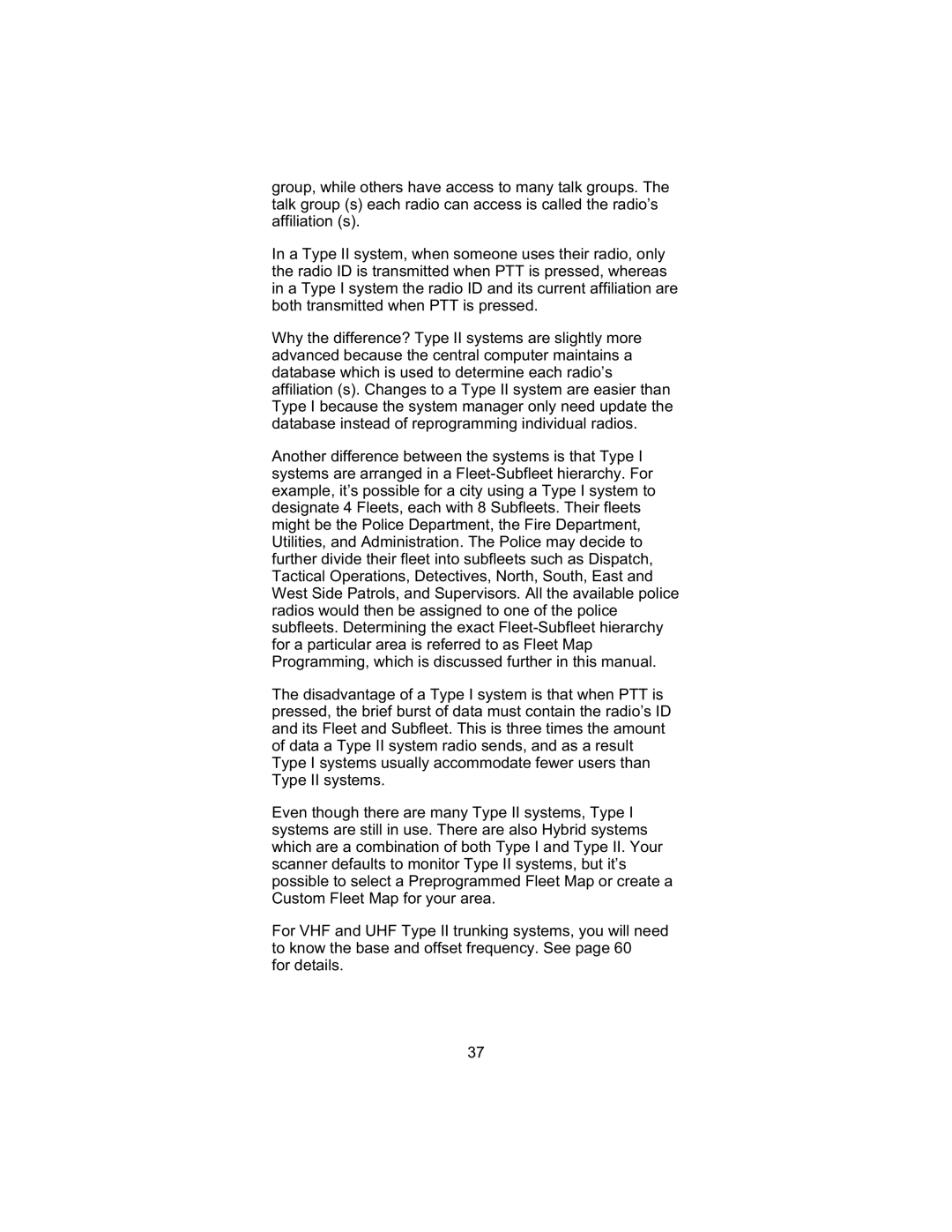group, while others have access to many talk groups. The talk group (s) each radio can access is called the radio’s affiliation (s).
In a Type II system, when someone uses their radio, only the radio ID is transmitted when PTT is pressed, whereas in a Type I system the radio ID and its current affiliation are both transmitted when PTT is pressed.
Why the difference? Type II systems are slightly more advanced because the central computer maintains a database which is used to determine each radio’s affiliation (s). Changes to a Type II system are easier than Type I because the system manager only need update the database instead of reprogramming individual radios.
Another difference between the systems is that Type I systems are arranged in a
The disadvantage of a Type I system is that when PTT is pressed, the brief burst of data must contain the radio’s ID and its Fleet and Subfleet. This is three times the amount of data a Type II system radio sends, and as a result Type I systems usually accommodate fewer users than Type II systems.
Even though there are many Type II systems, Type I systems are still in use. There are also Hybrid systems which are a combination of both Type I and Type II. Your scanner defaults to monitor Type II systems, but it’s possible to select a Preprogrammed Fleet Map or create a Custom Fleet Map for your area.
For VHF and UHF Type II trunking systems, you will need to know the base and offset frequency. See page 60
for details.
37
